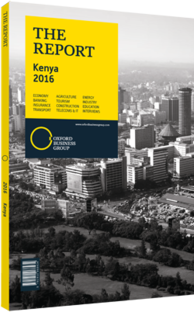Kenya's central bank pushes for new solutions
The government has stepped up spending in a bid to push growth back up to 6.5-7% from the 2014 level of 5.3%. In his June 2015 budget statement for the 2015/16 fiscal year, Cabinet Secretary for the National Treasury Henry Rotich said the government also aims to maintain macroeconomic stability and counter challenges such as security, drought, lower tourism numbers and tea prices, and a weaker global economy. Low rainfall from October-December 2014 pushed up food prices and coupled with the declining shilling in an import-dependent economy drove inflation to the upper limit of the Central Bank of Kenya’s (CBK) 2.5-7.5% target, with a preference for 5%.
However, Patrick Njoroge, the new CBK governor who took over in July 2015, vowed to target inflation and cut lending rates at commercial banks. Since then, Kenya National Bureau of Statistics figures show annual (month-to-month) inflation dropped from 7.03% in June 2015 to 5.97% in September 2015. While lower oil prices have helped, some segments such as food, continue to present challenges. Armando Morales, the IMF’s resident representative in Kenya, told OBG that the CBK is becoming more proficient at managing monetary policy.
Defensive Moves
The shilling, like most other currencies, has dropped against the US dollar, largely due to the strengthened US economy and the prospect of an interest-rate hike by the US Federal Reserve Bank. In his June 2015 budget statement Rotich said, “To avoid further pressures, which in part reflect speculative behaviour, the CBK has tightened monetary policy by raising the central bank rate to 10% from 8.5%.” In July 2015 the CBK brought the rate up to 11.5%.
Strong demand for dollars continues, including for imports such as fuel and cars, as well as inputs for big infrastructure projects. The shilling started 2015 at KSh90.55:$1, climbed to a peak of KSh106.12:$1 in September and slid back to KSh101.88:$1 in October, possibly buoyed by recovering tourism figures and foreign investors hunting high-yielding government securities, according to local investment solutions and data firm Cytonn Investments Management.
Interest Rates
The CBK and the Kenya Bankers’ Association introduced the Kenya Banks’ Reference Rate to price loans. It is set every six months, barring special circumstances, based on the average central bank rate and the two-month moving average of the 91-day Treasury bill rate. In January 2015 it was at 8.54%, and in July 2015 the CBK committee hiked it to 9.87%. Rotich said in June 2015 that transparency meant the average lending rate declined from 16.9% in July 2014 to 15.5% in March 2015 and the spread between the average lending and average deposit rates fell from 10.3% to 8.8% over the same period.
Bids to mop up liquidity in the market include CBK’s term auction deposit facilities and repurchase agreements, as well as adjustments to curb trading activity and make it costly for speculators to hold dollars. Upward pressure on interest rates meant that at the October 5, 2015 auction the 91-day Treasury bill was at 20.637%, according to CBK. A day later the government’s one-year, KSh30bn ($330m) bond sold at a record rate of 19.062%. Pressure has also come from credit downgrades. In October 2015 Standard & Poor’s downgraded the outlook on Kenya’s “B+” rating from stable to negative, citing risks from currency depreciation, deficits and rising debt. While in July 2015 Moody’s affirmed a “B1” rating and stable outlook, Fitch moved Kenya from a stable “B+” to negative “BB-” due to “deteriorating finances”.
Money Supply
The latest CBK figures available as of October 2015 showed growth in broad money supply, M3, was 18.6% in the year to June 2015, up from 18.2% to June 2014 and well above the central bank’s target of 14.2%. Net domestic assets in the banking system were up 30.5% for the year to June 2015, largely due to increased borrowing by government and private sector credit from the banking sector.
You have reached the limit of premium articles you can view for free.
Choose from the options below to purchase print or digital editions of our Reports. You can also purchase a website subscription giving you unlimited access to all of our Reports online for 12 months.
If you have already purchased this Report or have a website subscription, please login to continue.

